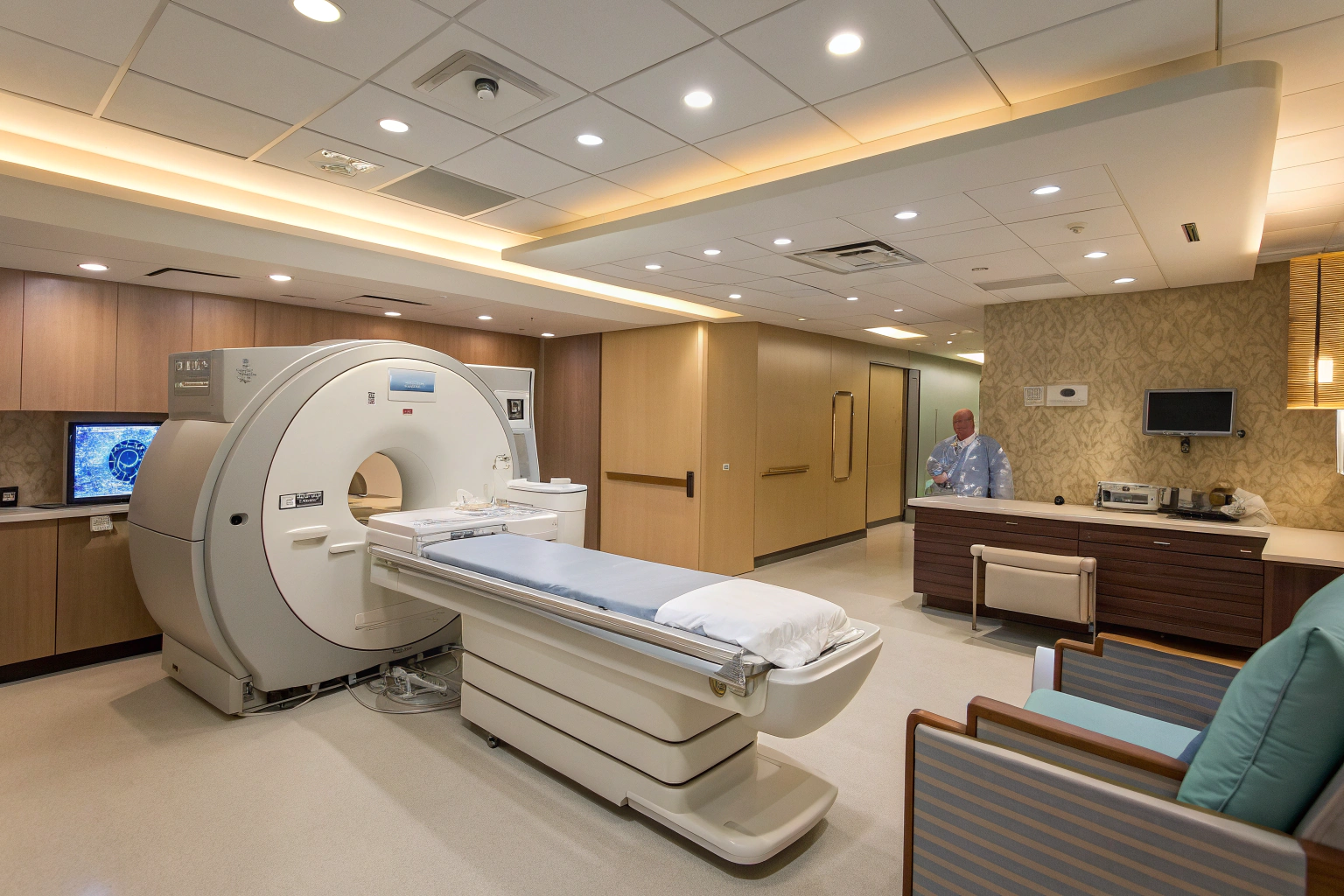In healthcare design, creating a safe and comfortable MRI suite is a complex challenge. Patients often feel anxious, and medical staff must balance hygiene, comfort, and functionality. Many hospital designers struggle with fabric choices because not every textile is safe in a high-magnetic environment. Using the wrong material can cause safety hazards, equipment interference, or poor patient experience.
The best fabrics for MRI suites are non-magnetic, anti-static, durable, and easy to clean. These materials must withstand hospital-grade disinfectants, maintain patient comfort, and comply with infection control regulations. Options such as nonwoven fabrics, antimicrobial polyester, and medical-grade vinyl provide the right mix of performance and safety.
The fabric selection process requires careful consideration of safety standards, patient needs, and long-term maintenance. If you want to create a space that is safe for patients and efficient for staff, you need to look beyond appearance and focus on technical properties. Let’s explore the best textile solutions for MRI environments.
Why Do MRI Suites Need Special Fabrics?
Patients and designers often wonder why normal upholstery or curtains cannot be used in MRI rooms. The answer lies in physics and patient safety.
MRI machines create powerful magnetic fields, which attract ferromagnetic materials. Any textile containing metallic fibers, zippers, or coatings can become a projectile risk or interfere with imaging quality. At the same time, fabrics must meet healthcare standards for hygiene and durability.
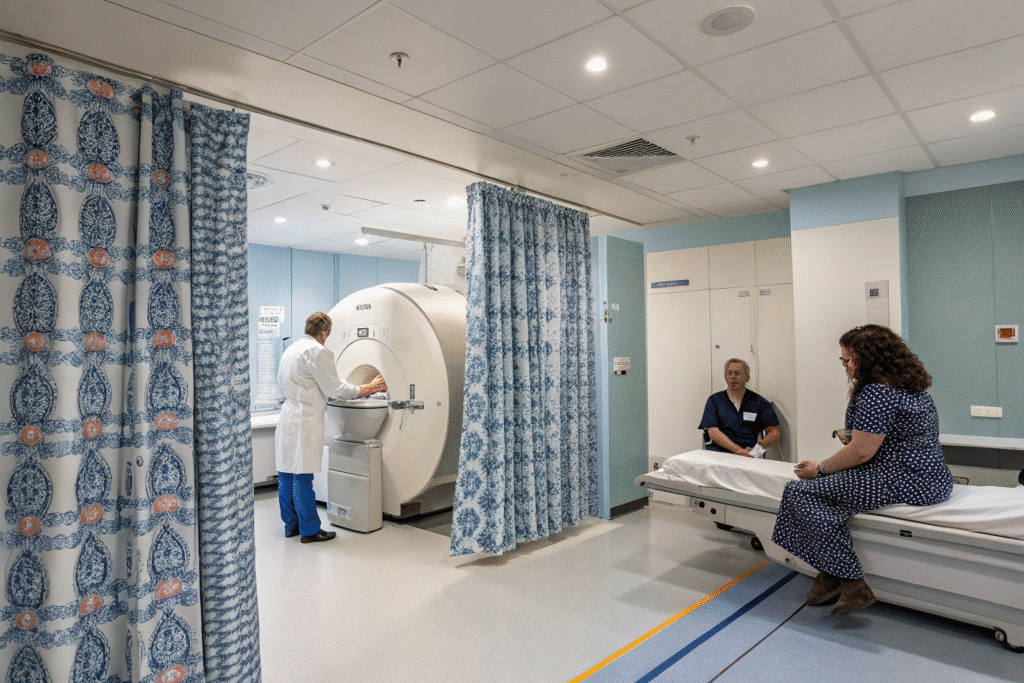
What makes fabric selection critical for safety?
MRI safety requires eliminating any risk of magnetic interference. Fabrics with metal threads, conductive coatings, or reflective finishes are dangerous. Hospitals must only use textiles certified as non-magnetic and non-conductive. For example, the American College of Radiology outlines strict MRI safety guidelines that include environmental materials. Choosing compliant fabrics prevents accidents and ensures diagnostic accuracy.
How does fabric impact infection control?
Hospital environments demand textiles that resist microbes and withstand disinfection. Fabrics like antimicrobial polyester blends are treated to reduce bacterial growth. Surfaces such as medical-grade vinyl allow easy cleaning with strong hospital disinfectants. According to CDC healthcare infection guidelines, soft furnishings can harbor pathogens if not properly designed. Using the right textiles helps reduce healthcare-associated infections.
What Types of Fabrics Are Safe for MRI Rooms?
Designers and hospital administrators usually select fabrics based on technical safety data. Not all hospital textiles are MRI-approved.
The safest MRI fabrics are nonwoven textiles, medical-grade polyester, and PVC-free coated fabrics. They combine non-magnetic safety with durability and hygiene control.
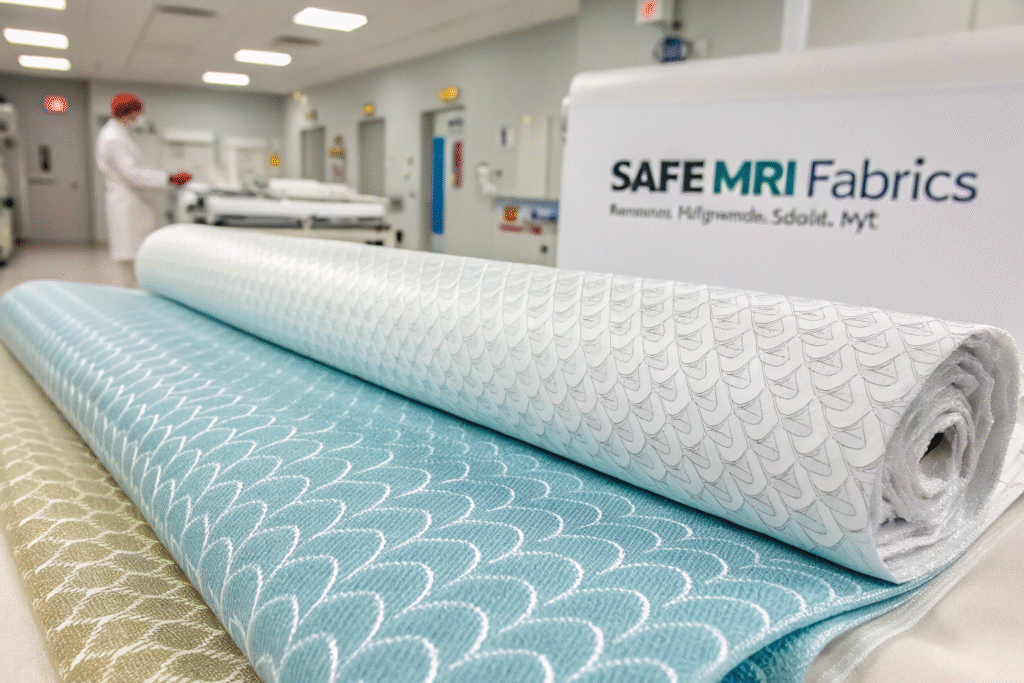
Are nonwoven fabrics a good choice?
Yes. Nonwoven fabrics are widely used in hospital curtains, covers, and disposable linens. They are made from fibers bonded together without weaving or knitting, which eliminates metallic threads. Nonwovens like polypropylene are lightweight, breathable, and cost-effective. They are also commonly used in surgical drapes due to their ability to resist fluids and microbes.
Why is medical-grade vinyl preferred for furniture?
MRI furniture such as patient tables and seating require upholstery that is easy to disinfect. Medical-grade vinyl is non-magnetic, stain-resistant, and highly durable. Many suppliers offer PVC-free vinyl to meet sustainability standards. This fabric prevents moisture penetration and can be cleaned with strong chemicals without degrading. Hospitals often source it from specialized suppliers like Spradling Healthcare Fabrics.
How Do Fabrics Improve Patient Comfort in MRI Suites?
While safety and hygiene are priorities, patient comfort plays a major role in MRI design. Anxiety and claustrophobia are common in MRI procedures. Soft, warm, and calming fabrics can reduce stress.
The right textiles balance safety with sensory comfort. Neutral colors, soft textures, and acoustic control are all important.
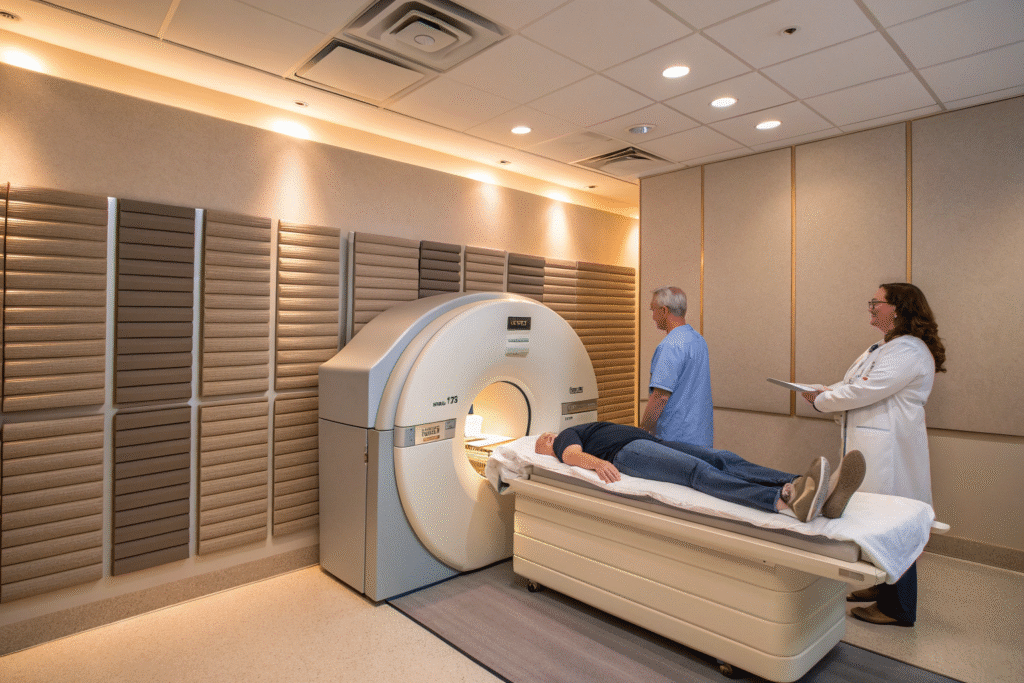
Can fabrics reduce noise in MRI rooms?
Yes. MRI machines generate loud sounds during scans. Acoustic fabrics can absorb echoes and reduce noise. For example, polyester acoustic panels wrapped in nonwoven fabric can dampen sound. According to Health Design research, reducing noise improves patient satisfaction and lowers stress.
How do textiles affect patient relaxation?
Soft-touch fabrics in calming colors improve the patient experience. Cotton-polyester blends, though not used in direct MRI zones, may be used in waiting areas. The key is to use non-magnetic, flame-retardant fabrics that meet hospital codes. Some facilities even use soothing printed curtains to create a less clinical atmosphere, improving patient compliance during imaging.
What Should Hospitals Consider When Choosing MRI Fabrics?
Hospitals must follow strict procurement processes when sourcing MRI textiles. Decision-makers balance cost, safety, and compliance.
The best approach is to choose fabrics tested for MRI safety, infection control, and durability. Working with certified suppliers ensures compliance with U.S. and international standards.
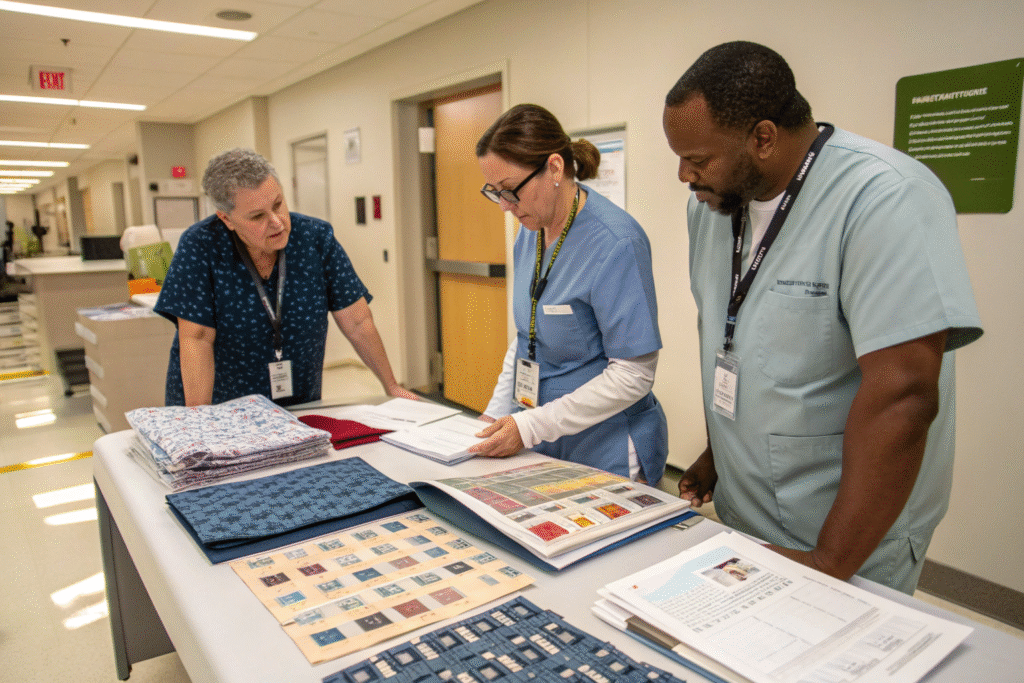
How do compliance standards affect fabric choices?
Hospitals in the U.S. must comply with Joint Commission and NFPA 701 flame retardancy standards. MRI fabrics must also meet non-magnetic certifications. Purchasing from vendors familiar with these rules prevents costly replacements. Resources like NFPA fire safety codes help procurement teams verify materials.
What role does long-term maintenance play?
Hospitals must calculate the lifecycle cost of fabrics. A cheap fabric that degrades under cleaning chemicals may cost more in replacements. Durable vinyl or antimicrobial polyester has a higher upfront cost but saves money in the long term. According to Facility Management Journal, lifecycle analysis is essential for hospital textile planning.
Conclusion
Fabrics in MRI suites are not just about aesthetics. They are a matter of safety, compliance, and patient care. The best textiles are non-magnetic, antimicrobial, durable, and acoustically supportive. From nonwoven polypropylene curtains to medical-grade vinyl furniture, every choice must pass strict standards. Hospitals that invest in safe and comfortable fabrics create better patient experiences and reduce risks.
If you are planning to design or refurbish an MRI suite, consider working with a trusted fabric manufacturer. At Shanghai Fumao, we specialize in healthcare-grade fabrics that combine safety, performance, and comfort. To discuss custom fabric solutions for your medical facility, please contact our Business Director, Elaine, at elaine@fumaoclothing.com.

